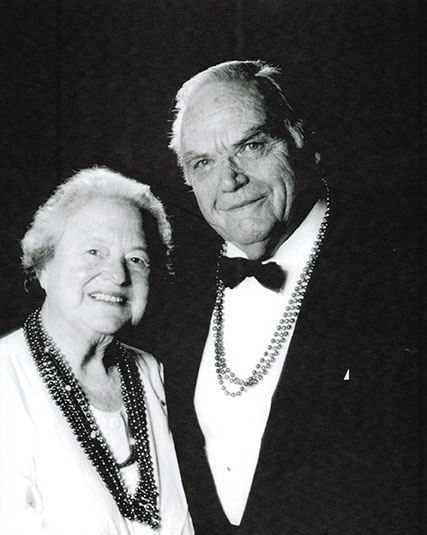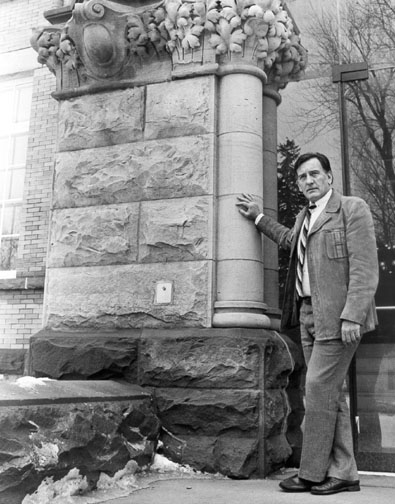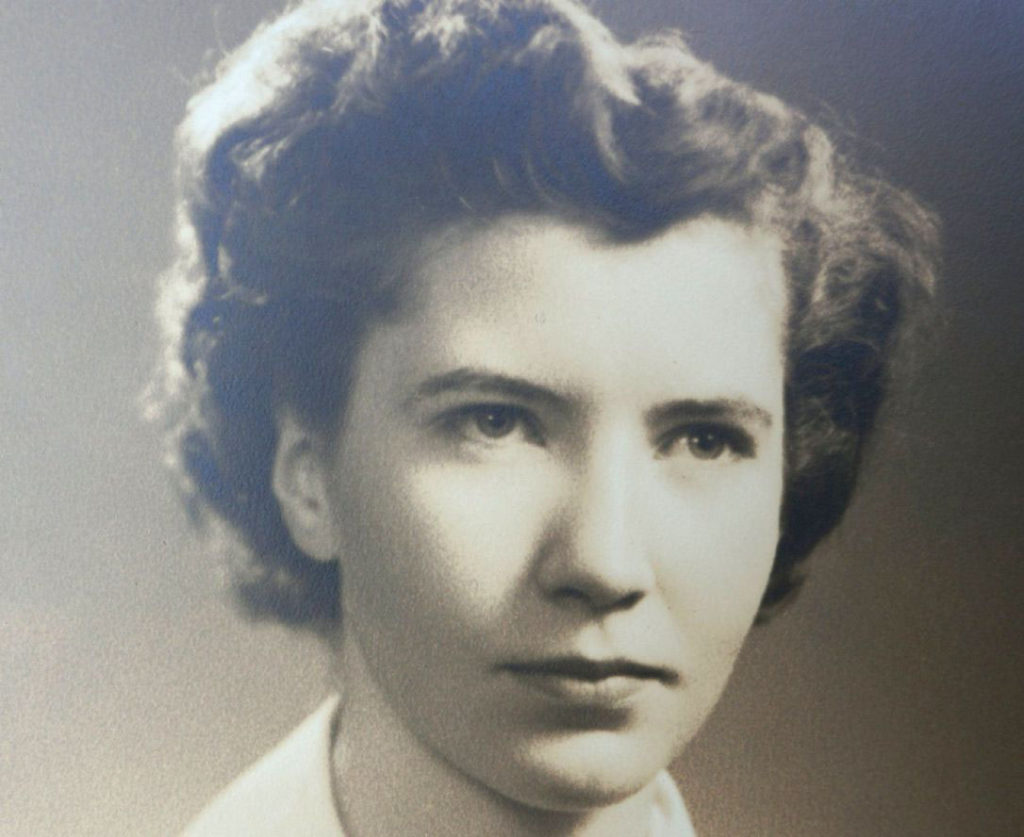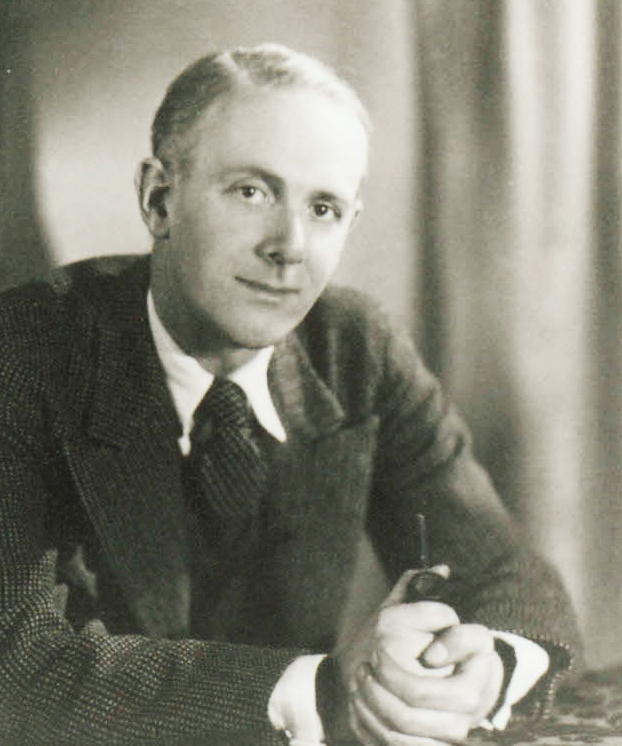About the Awards

The A.K. Sculthorpe Award for Advocacy
This award recognizes an individual, a group or a non-profit organization that has brought greater attention to an important heritage issue or controversy, and/or that has been able to persuade others, change policies and practices, or mobilize people during a heritage crisis.
This award honours Alice King Sculthorpe, a former ACO president, beloved for her spirited and steadfast will to preserve our valuable heritage. AK was a formidable campaigner for Port Hope’s wealth of historic architecture. She led the fight to save—among other key sites—the 1856 Grand Trunk Railway station, the 1930 Capitol Theatre, St. Mark’s 1822 Church, and Walton Street, Port Hope’s main street and the spine of its commercial heritage conservation district.
………………………………………..

The James D. Strachan Award for Craft
This award recognizes an artisan or skilled tradesperson for outstanding employment of their craft and expertise in the conservation and restoration on a specific project or over the course of their career.
It was established in memory of Jim Strachan, who died in the summer of 2010. Jim Strachan built up one of the province’s most respected construction firms specializing in heritage conservation. Among his many restoration projects were Osgoode Hall, buildings at Fort York for Heritage Toronto, the George Brown House for the Ontario Heritage Foundation, the Old Stone Church in Beaverton, and renovation/restoration of numerous buildings at the University of Toronto. Importantly for the future of conservation, Jim Strachan provided many opportunities for apprenticeships in numerous trades. The firm has its own woodworking shop, and keeps several heritage carpenters and masons employed full time.
………………………………………..

The Peter Stokes Restoration Award
This award recognizes the exemplary restoration of a heritage structure or important architectural feature undertaken in accordance with recognized best practice and policies for conservation in Ontario.
It honours the ACO’s pioneering restoration architect, Peter John Stokes, best known for bringing international standards of heritage conservation to Ontario and eastern Canada. All his projects—including his writing, lectures, and volunteer activities—attest to the premium he placed on saving historic buildings, no matter how challenging the work. Stokes began his career in 1958 as the restoration architect for Upper Canada Village, where he stayed until 1961. Subsequently he became known first for the restoration work he did in his adopted hometown of Niagara-on-the-Lake, and then throughout Ontario for such projects as Sandyford Place in Hamilton, Victoria Hall in Cobourg, and the Grange in Toronto.
Peter’s career coincided with the pioneering era of architectural conservation in the province. When the Ontario Heritage Act first passed in 1975, countless communities called on him for his much-needed expertise, his valuable advice in the face of crises, and his unwavering commitment to authenticity, at a time when few people understood the true value of preservation. He enlightened many a community as to the value of its own heritage. For his many contributions to Ontario’s heritage, Peter was the recipient of ACO’s very first Eric Arthur Lifetime Achievement Award.
This award is given in two categories:
Large-Scale/Team/Corporate: This award is given to an architectural firm, large project team, or corporate owner of a large-scale restoration project.
Small-Scale/ Individual/Small Business: This award is given to an individual, small project team or small business owner of a small-scale restoration project.
………………………………………..

The Paul Oberman Award for Adaptive Reuse
The award recognizes projects that incorporate and reuse significant heritage structures in fitting and imaginative ways, thereby conserving them for future use and enjoyment. It honours the late Paul Oberman, a master of adaptive reuse, whose company, Woodcliffe Landmark Properties, was responsible for some of the most important examples in Ontario. From his biography:
“Paul believed that neighbourhoods thrive when architectural heritage is preserved and repurposed as a backdrop for healthy community interaction. Heritage properties, he advocated, could be developed in harmony with cutting edge modern design to yield financial viability while contributing to the vibrancy of the city. This led him to focus on the adaptive reuse of many historically significant buildings, repurposing these structures and incorporating them into the fabric of 21st-century Toronto. He wanted to respect the past, make contemporary architecture in the present, and build a legacy for the future.”
Paul’s projects received many honours, including the Governor General’s Award for Architecture in 1992 for King James Place in Toronto. He was the recipient of the ACO Special Achievement Award in 2010.
This award is given in two categories:
Large-Scale/Team/Corporate: This award is given to an architectural firm, large project team, or corporate owner of a large-scale restoration project.
Small-Scale/ Individual/Small Business: This award is given to an individual, small project team or small business owner of a small-scale restoration project.
……………………………….

The Carlos Ventin Award for Municipal Heritage Leadership
This award (sponsored by +VG Architects) recognizes elected municipal leaders, municipal staff and appointed representatives who have championed the rehabilitation and/or adaptive reuse of public heritage buildings in their community. These buildings may include libraries, town halls, city halls, community centres, theatres, schools, and other civic spaces. Communities of all sizes that have demonstrated a commitment to reviving their heritage structures are eligible for this award.
The award honours architect Carlos Ventin, a pioneer in saving historic buildings in Ontario for adaptive re-use. In 1972, before the practice of saving old buildings was widely accepted, Carlos convinced the Town of Simcoe to save the historic Simcoe Courthouse to accommodate the new Municipal Offices and Library. The award-winning project gained wide attention from preservationists and led to the firm doing more than 100 similar projects across Ontario for community buildings (many receiving heritage and design awards) in cities such as Windsor, Toronto, London, Milton, Napanee, Kingston, Brockville, Orangeville and Lindsay.
.

The Margaret and Nicholas Hill Cultural Heritage Landscape Award
This award recognizes an individual, group, and/or community action project that has endeavoured to preserve a significant Cultural Heritage Landscape, or has worked to raise awareness of, and appreciation for a significant Cultural Heritage Landscape as defined by the Ontario Heritage Trust.
It was named to honour Nicholas and Margaret Hill, who contributed extensively to the Architectural Conservancy of Ontario for decades, beginning in the early 1970s. The couple were among the second generation of those who shaped and helped expand the organization. They volunteered on the Provincial Board of Directors, and initiated the Huron County Branch, which was active in Goderich for two decades, and were very involved with the Cambridge branch. After Nick’s untimely death in 2001, Margaret continued as provincial secretary. Until her late 80s, Margaret continued to participate as an active member of the Guelph-Wellington Branch (and also volunteered at the Art Gallery of Guelph).
Nick had degrees (and simultaneously held professional licences) in Architecture, Urban Planning, and Landscape Architecture. He was a pioneer in heritage conservation district planning, and the author of the second and third such plans written for Bayfield and Goderich. He worked in London and in St. John NB, where he illustrated beautiful pen-and-ink guides of heritage buildings and neighbourhoods. He was also the author of several books illustrating the heritage and character of his beloved Huron County. After their return to Guelph, Nicholas and Margaret worked together on numerous heritage district studies and plans, including the Village of Blair in Cambridge, and the Village of Doon and the Victoria Park Neighbourhood, both in Kitchener. All were illustrated with Nick’s superb drawings, creating some of the most complete and artistic documents representing the character of communities and landscapes.
……………………………………………

The Stephen A. Otto Award for Research and Documentation
This award recognizes an individual or group for exemplary and scholarly work in the research and documentation of Ontario’s built heritage and cultural landscapes, as well as the broad distribution of this knowledge to ensure that it is shared widely and for the benefit of all.
It was created in 2019 to honour Stephen Otto, a longtime member of ACO and one of Ontario’s strongest advocates for heritage conservation, who died in April 2018. Otto is warmly remembered for his tireless work and numerous accomplishments, and his devotion to preserving Ontario’s heritage will continue to bolster our work for many years to come.
Steve was head of Heritage Conservation Services at Ontario’s Ministry of Culture and Recreation, and administered the newly enacted Ontario Heritage Act between 1975 and 1981. His early work in the 1970s and 1980s at the Ministry and at the Ontario Heritage Trust established a spirit of sharing among those interested in Ontario’s history. His accomplishments are numerous. First there were his updates on Eric Arthur’s landmark Toronto – No Mean City. Then his Once More Into the Breach that chronicled Fort York’s long history of trials and tribulations, then his participation in the award-winning urban design proposal Fort York – Setting it Right, both of which gained Toronto City Council’s attention, and contributed to the success and achievements of the Friends of Fort York, a group of volunteers Steve helped found, provided continuing leadership to, and funds for the Fort York Guard. When he died, he was nearing completion of a book on Ontario architecture, planned for publication by University of Toronto Press.
Well beyond Fort York, Steve influenced the development and preservation of numerous heritage buildings and neighbourhoods including Toronto’s Distillery District, Spadina House, and Todmorden Mills, and he advised on and participated in successful efforts to return the site of Upper Canada’s first parliament buildings to public ownership.
…………………………………
……………………………………….

Mary Millard Award for Special Contributions to ACO
This award recognizes ACO members and associates who, through their actions and efforts, have made a significant contribution to the organization. It is these volunteers with their dedication, initiative and intelligence that constitute the most dynamic force in furthering the cause of historic preservation.
The award is named for Mary Millard, whose generous unexpected bequest to ACO has strengthened the organization so that it can continue to fulfill its mission for many years to come.
…………………………………

Eric Arthur Lifetime Achievement Award
The Eric Arthur Lifetime Achievement Award recognizes an individual or a group who have made an outstanding contribution to the heritage conservation movement in Ontario over a sustained period of time. The state of the Province’s built heritage today would not be the same without the significant activities of this person.
The award honours ACO’s founder, Eric Ross Arthur, who initiated and inspired the preservation movement in Ontario with his visionary leadership and professional expertise. Born in Dunedin, New Zealand, in 1898, Eric Arthur graduated in 1921 with a master’s degree from the School of Architecture in Liverpool, England, whose curriculum was still modelled after the École des Beaux-Arts in Paris. He worked briefly for the firm of Sir Edwin Lutyens before moving to Canada in 1923 to begin his teaching career at the University of Toronto. Here, Eric Arthur came into his own as an inspiring professor, respected architect, noted author, and preservation activist.
Among many achievements, Eric Arthur led the charge to save Toronto’s St. Lawrence Hall and the Gooderham flatiron building, established a student program of measured drawings that became an invaluable record of the province’s finest architecture, and together with others, founded ACO in 1933. One of his strongest passions was Ontario’s early vernacular architecture, which eventually led to the Conservancy’s purchase in 1939 of the 1817 Barnum House in Grafton. Today, the restored Barnum House is a museum owned by the Ontario Heritage Trust; it also serves as the ACO’s defining logo. In 1964, Eric Arthur expressed the pride he had in his adopted city through his book, Toronto, No Mean City, a seminal work which was expanded and revised by Stephen Otto in 1986.
.
ACO NextGen Award
This award recognizes an individual early in their career for outstanding contributions to the field of heritage, and a clear commitment to conservation work, advocacy, heritage craft, and/or community engagement.
.
ACO Public Education and Engagement Award
This award recognizes events, exhibitions, programs, news media, digital platforms, and other projects undertaken by an individual, a group or a non-profit organization that has helped to advance public understanding, engagement with and enjoyment of Ontario’s built and cultural heritage.